|
|
Post by eieio on Jan 21, 2018 19:04:55 GMT 12
carrying a passenger while working low level is I believe illegal.
|
|
gtw
Flight Lieutenant
 
Posts: 85
|
Post by gtw on Jan 21, 2018 20:51:48 GMT 12
carrying a passenger while working low level is I believe illegal. Is that a new rule, We just gave rides as requested when I was ag flying. |
|
|
|
Post by Deleted on Jan 22, 2018 19:56:16 GMT 12
It may well be, I was lucky to be taken up for a brief job concerning asparagus in a Cresco while I was working with them. Quite the experience!
And yes, I'm still waiting to go for a Fletcher ride...
|
|
|
|
Post by The Red Baron on Jan 23, 2018 5:46:52 GMT 12
My only Fletcher ride was in CBG Zac...  |
|
|
|
Post by Deleted on Jan 23, 2018 9:18:06 GMT 12
I used to like you, TRB. I thought you were alright.
|
|
|
|
Fletcher
Apr 16, 2018 19:00:24 GMT 12
via mobile
Post by Deleted on Apr 16, 2018 19:00:24 GMT 12
|
|
|
|
Post by johnnyfalcon on Apr 17, 2018 9:01:06 GMT 12
Click on the "Next" button Zac to see a pic of it in January
|
|
|
|
Post by Deleted on Apr 17, 2018 10:08:53 GMT 12
I did, and I was surprised by the window configuration! Very interesting.
|
|
|
|
Post by planecrazy on Apr 16, 2019 13:15:06 GMT 12
Hasn’t been much of interest of late until this old gem showed up, 1970’s Fletcher could almost be called a classic these days? From what I have found made in 1979 serial number 267.   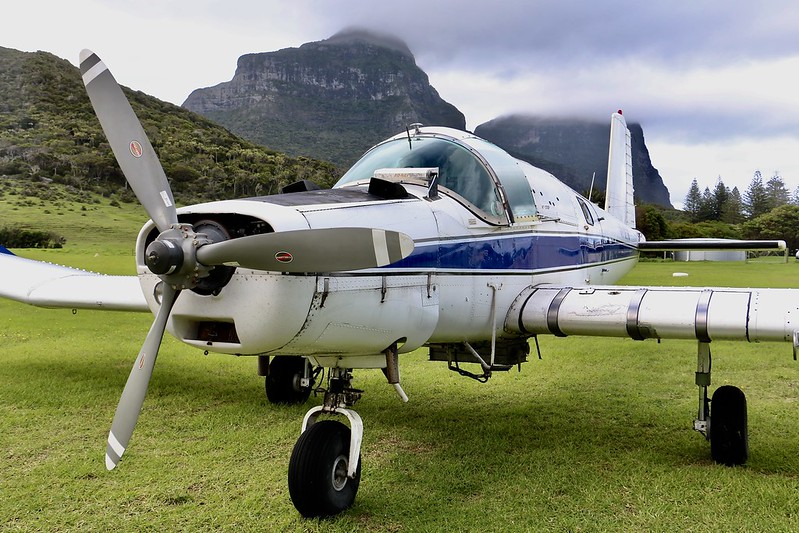    Be interested to hear some history on this one, currently in the air between Lord Howe Island and Norfolk Island on her way to her place birth! |
|
|
|
Post by starr on Apr 16, 2019 14:24:07 GMT 12
JAA is no 259 and JAB 272, so 1979 would be correct.
|
|
|
|
Post by oj on Apr 16, 2019 20:39:47 GMT 12
I think they were some of if not the first that we fitted with electric elevator trim actuators as a production modification or option. Prior to that the elevator trim was like a hand drill toothed wheel and cog in the cockpit.
Some operators though had motorised their hand drill versions in the cockpit,retaining the rotating torque tube to the elevator jackscrew.
The production line electric trim dispensed with all that and just had three wires to the directly coupled actuator.
|
|
|
|
Post by The Red Baron on Apr 16, 2019 20:51:07 GMT 12
267 is a FU24-954,was breifly ZK-EMP before being exported to Austraila.On its way back for Murray Hargreaves at Maungaturoto.
|
|
|
|
Post by isc on Apr 16, 2019 21:28:00 GMT 12
Excuse my ignorance, what is the device mounted in front of the windscreen? isc
|
|
|
|
Post by delticman on Apr 16, 2019 23:01:04 GMT 12
Excuse my ignorance, what is the device mounted in front of the windscreen? isc The thing is a Lightbar. In fact it shows a series of numbers which keeps the pilot on even tracks while sowing or spraying. By using GPS satellites and an on board computer that can calculate the best way of sowing/spraying and also keeps a record of where the aircraft is working. This was GPS system was developed in New Zealand in the early 1990's and is now used world wide on ag aircraft but also used on ground based agricultural machinery. In the early 2000's a further development was the ability to adjust the spreading rates while in flight for certain fields or even changing the spreading rates go up or down hills relating to the speed of the aircraft or helicopter. It's all got quite technical. |
|
|
|
Post by isc on Apr 17, 2019 14:39:49 GMT 12
Thank's delticman, a bit of a developement from Tigermoth days and laying out strips of toilet paper. I knew of the GPS use, but thought it was on the instrument pannel, or at least inside the cockpit. isc
|
|
|
|
Post by delticman on Apr 17, 2019 15:14:54 GMT 12
Thank's delticman, a bit of a developement from Tigermoth days and laying out strips of toilet paper. I knew of the GPS use, but thought it was on the instrument pannel, or at least inside the cockpit. isc That's only the lightbar outside, inside there is a touch screen and it depends what the operator wants, how big it is. If you ever get chance to talk to an ag pilot, you will find it interesting. |
|
|
|
Post by baronbeeza on Apr 17, 2019 15:17:35 GMT 12
Most of them use differential GPS which makes the system so much more accurate. It would be similar to what the surveyors use, in that a component is placed nearby and can provide corrections. The fixed component knows it is not moving so as the signal from the satellites move about a little, the correcting info is relayed to the GPS system in the aircraft. The lightbar arrangement is basically telling the pilot where to fly and when to drop, it controls the entire job. The pic is from a helicopter system but you can see the pattern that can be presented to the farmer on completion of the job.  |
|
|
|
Post by delticman on Apr 17, 2019 17:49:43 GMT 12
Most of them use differential GPS which makes the system so much more accurate. It would be similar to what the surveyors use, in that a component is placed nearby and can provide corrections. The fixed component knows it is not moving so as the signal from the satellites move about a little, the correcting info is relayed to the GPS system in the aircraft. The lightbar arrangement is basically telling the pilot where to fly and when to drop, it control the entire job. The pic is from a helicopter system but you can see the pattern that can be presented to the farmer on completion of the job.  You are quite right, it is Differential GPS. I wasn't going to go that far on how it worked as most folk know what a GPS is. It's nothing to do with the maps on our phones, it just tells us where we are. By using a differential transmitter is has an exact location. Wanganui Aero Work used to use a portable transmitter and a good location was a trig station. In the early days, the Australians were able to use FM radio stations. There is lots of satellites now but in the early days but in the early days they were mostly over the horizon and your GPS receiver had to see four, three for position and the forth for the time. |
|
|
|
Post by planecrazy on Apr 17, 2019 19:56:35 GMT 12
Excuse my ignorance, what is the device mounted in front of the windscreen? isc Here is a tighter shot of the light bar device.  |
|
|
|
Post by Peter Lewis on Aug 16, 2019 23:22:26 GMT 12
To wind back the years to the beginning: Fu-24 c/n 1 was actually the second prototype - the first had been destroyed in static testing at Pasadena. It first flew on 14 June 1954 as N6505C, and after the initial test flight program had been completed was shipped to NZ in August. Issued with the registration ZK-BDS the aircraft was assembled at Rukuhia and first flown on 24th September by Guy Robertson. Engine at that time was a 225hp Continental O-470-E. It then had to undergo certification by NZ CAA. 70 hours of test flying were carried out at Woodbourne and at Paraparaumu, with Cliff Andrews at the controls.
ZK-BDS in original configuration, at Rongotai late 1954 during the test flight sessions. 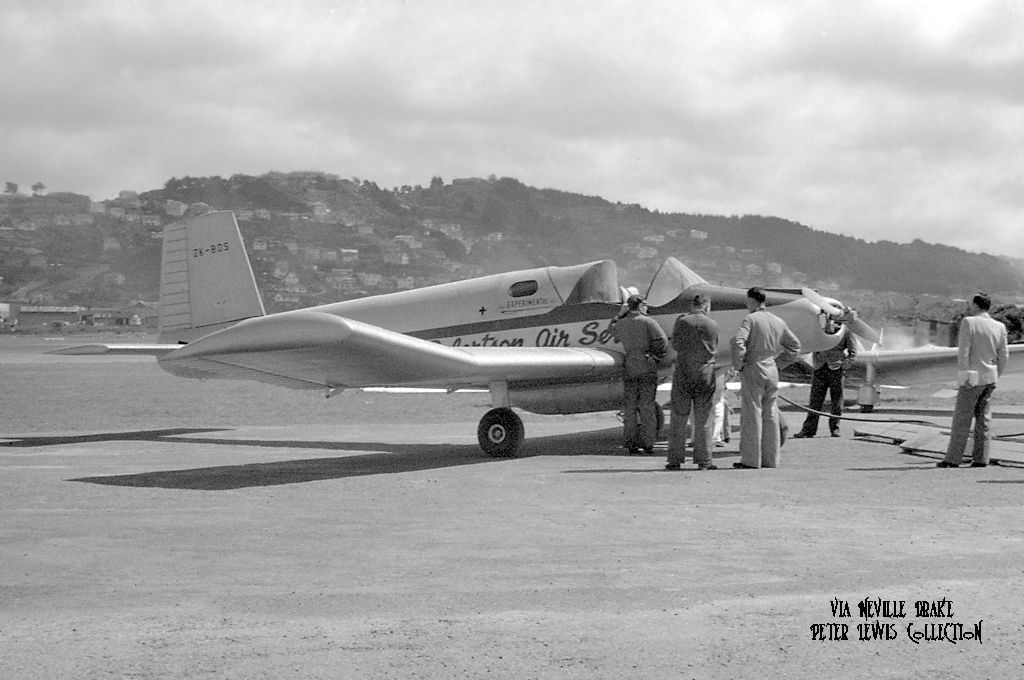  ![]() 
It started productive work on 20Dec1954, being based at Te Kuiti with Robertson's chief pilot Bob Gummer.
Early in 1955 ZK-BDS carried out a sales tour around the country to show the aircraft to prospective customers.
At Mangere , on the sales tour
After flying initially with an open cockpit, this was changed to a standard canopy in July 1956. The airframe was upgraded many time over subsequent years, and more powerful engines were progressively fitted. In December 1960 it had a 240hp O-470N, in May 1967 a 260hp IO-470D was tested and in December 1975 it was up to a 300hp IO-520F. It first flew with a 400hp Lycoming IO-720 in December 1981 to become a FU24-950M.The final engine fitted was the turbine Walter 601D and it flew with this on 8Jun1999. Nicely tucked up at home base ZK-BDS at Te Kuiti ZK-BDS at Te Kuiti At Rukuhia 26Mar1966 At Rukuhia 26Mar1966 and active later that same day and active later that same day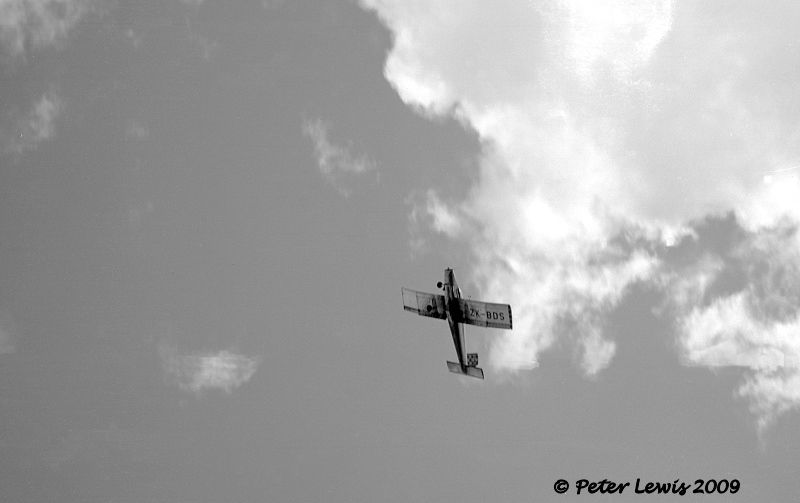 At a Waikato open day in the 1970s, displaying the later RAS livery. At a Waikato open day in the 1970s, displaying the later RAS livery. 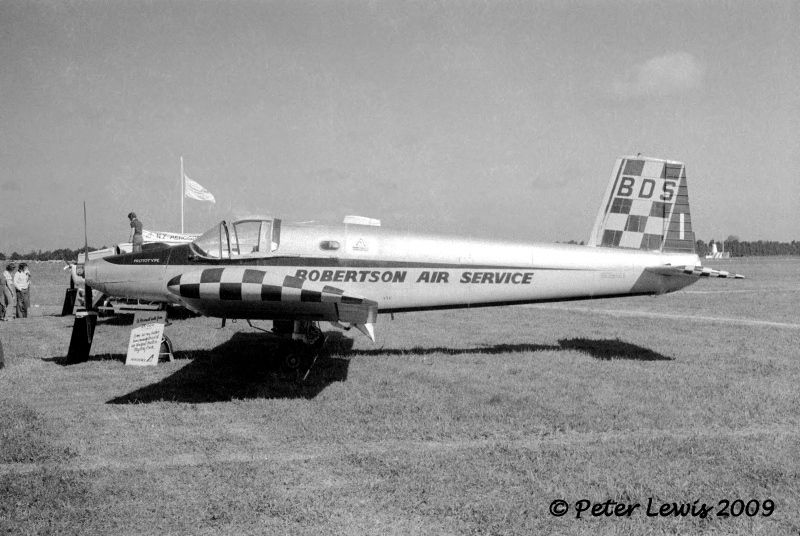
Now appearing in its final form with a Walter turbine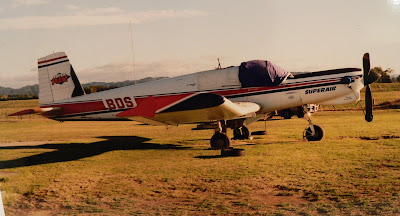 The end came for ZK-BDS during ferry flight Motu - Opotiki when caught in deteriorating weather and low cloud it hit a hill at Matawai near Whakatane on 20Sep03. Fortunatly, both crew on board survived. photo via George Muir.
The registration was cancelled 30Jun2008.
Contributions by Lou Forhecz & Dave Paull
(Note that the Fu-24 currently on display at the Classic Flyers museum painted as ZK-BDS is actually ZK-CRY c/n 124). |
|

